Places
Item set
- Identifier
- COL44
- Title
- Places
- Description
- Names of places associated with an item, such as the place of creation, or of use.
- Type
Items
-
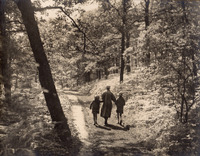 Northcliffe, Shipley, West Yorkshire, United Kingdom Northcliffe is an area on the south side of the Aire Valley near to Saltaire. It was a site of woods, agriculture, coal mining and stone quarrying from the seventeenth to the early twentieth century, In 1919 Norman Rae, a local mill owner and MP for Shipley, donated £12,500 to the local council to purchase 114 acres of Northcliffe for use by the public. It is now a park, allotments and playing fields.
Northcliffe, Shipley, West Yorkshire, United Kingdom Northcliffe is an area on the south side of the Aire Valley near to Saltaire. It was a site of woods, agriculture, coal mining and stone quarrying from the seventeenth to the early twentieth century, In 1919 Norman Rae, a local mill owner and MP for Shipley, donated £12,500 to the local council to purchase 114 acres of Northcliffe for use by the public. It is now a park, allotments and playing fields. -
Nottingham, Nottinghamshire, United KingdomNottingham is a city and the county town of Nottinghamshire
-
Oberammergau, GermanyTown in Bavaria, Germany. Visited by Isabel Salt during her European travels.
-
Ossett, West Yorkshire, United KingdomOssett is a market town near to Wakefield in West Yorkshire
-
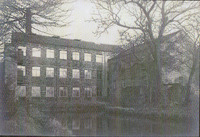 Oxenhope, West Yorkshire, United Kingdom Oxenhope is a rural village near to Haworth and Keighley in West Yorkshire. Sir James Roberts was born in Oxenhope.
Oxenhope, West Yorkshire, United Kingdom Oxenhope is a rural village near to Haworth and Keighley in West Yorkshire. Sir James Roberts was born in Oxenhope. -
Oxford, Oxfordshire, United KingdomOxford is a cathedral city in Oxfordshire famous for its medieval university.
-
Oxted, Surrey, United KingdomOxted is a town in Surrey, United Kingdom. It was the location of a home of Isabel Salt in her later life.
-
Paris, West Yorkshire, United KingdomCapital city of France
-
Playing Fields, Saltaire, West Yorkshire, United KingdomThe Playing Fields are a recreational area near the bottom of Victoria Road and near the River Aire on the edge of Saltaire. Salts Sports Association is based here and there are football and cricket grounds and Salts Tennis Club
-
Pudsey, West Yorkshire, United KingdomPudsey is a market town in West Yorkshire between Bradford and Leeds.
-
Queensbury, West Yorkshire, United KingdomQueensbury is a village in West Yorkshire near Bradford. It is one of the highest parishes in the United Kingdom. It was the location of Black Dyke Mills a textile factory owned by thge company John Foster & Son. The Fosters built many amenities in the villae for the benfit of its residents and their workers.
-
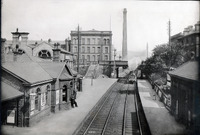 Railway Station, Saltaire, West Yorkshire, United Kingdom Saltaire Railway station was part of the Midland Railway and opened in 1856. The nearby railway, along with the canal, was likely an important factor in Titus Salt’s decision to build his model village on this site. The station closed in 1965 as part of the widespread programme of railway closures. The orignal buildings were demolished in the 1970s. A new station was reopened in 1984 and has services to Leeds, Bradford and Skipton.
Railway Station, Saltaire, West Yorkshire, United Kingdom Saltaire Railway station was part of the Midland Railway and opened in 1856. The nearby railway, along with the canal, was likely an important factor in Titus Salt’s decision to build his model village on this site. The station closed in 1965 as part of the widespread programme of railway closures. The orignal buildings were demolished in the 1970s. A new station was reopened in 1984 and has services to Leeds, Bradford and Skipton. -
Rapallo, ItalyRapallo is a town near Genoa in northern Italy. Rapallo was visited by Isabel Salt in 1913.
-
Reading, Berkshire, United KingdomA town in Berkshire, United Kingdom.
-
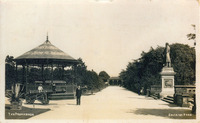 Roberts Park, Saltaire, West Yorkshire, United Kingdom Originally named Saltaire Park, the 14 acre space opened in 1871 and was free for anyone to enjoy. However, there were strict rules enforced in the park. Among other things, political and religious demonstrations were banned, as were wheeled vehicles and unaccompanied children under 8. By the early twentieth century Salts Mill and Saltaire were owned by Sir James Roberts, Roberts retired in 1918 and in 1920 gifted the park to Bradford Corporation for public use. At the same time, the part was renamed Roberts Park in memory of James's deceased son, Bertram Foster Roberts.. The park was originally reached by a bridge from the end of Victoria Road, over the valley to what is now the West entrance, at the lodge. This bridge had to be demolished after World War II, due to damage caused by tanks crossing to use the area for manoeuvres.
Roberts Park, Saltaire, West Yorkshire, United Kingdom Originally named Saltaire Park, the 14 acre space opened in 1871 and was free for anyone to enjoy. However, there were strict rules enforced in the park. Among other things, political and religious demonstrations were banned, as were wheeled vehicles and unaccompanied children under 8. By the early twentieth century Salts Mill and Saltaire were owned by Sir James Roberts, Roberts retired in 1918 and in 1920 gifted the park to Bradford Corporation for public use. At the same time, the part was renamed Roberts Park in memory of James's deceased son, Bertram Foster Roberts.. The park was originally reached by a bridge from the end of Victoria Road, over the valley to what is now the West entrance, at the lodge. This bridge had to be demolished after World War II, due to damage caused by tanks crossing to use the area for manoeuvres. -
Royal Tunbridge Wells, Kent, United KingdomRoyal Tunbridge Wells is a town in Kent, England about 30 miles from London.
-
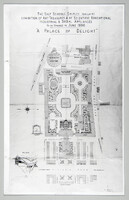 Royal Yorkshire Jubilee Exhibition site, Saltaire, West Yorkshire, United Kingdom The main site of the Royal Yorkshire Jubilee Exhibition held in 1887 in Saltaire.
Royal Yorkshire Jubilee Exhibition site, Saltaire, West Yorkshire, United Kingdom The main site of the Royal Yorkshire Jubilee Exhibition held in 1887 in Saltaire. -
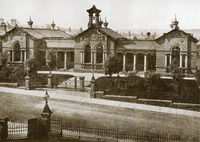 Salt High School building, Saltaire, West Yorkshire, United Kingdom The Salt School building on Victoria Road opened in 1868 as the location for the Factory School associated with Salts Mill. Before this, the Factory School was housed in the Dining Hall further down the road. There were both day scholars and half-timers, who would work at the mill for half a day and attend school for the other half. Boys entered on the right and girls on the left and the school was designed to cater for 750 children initially. In 1874, there were 806 half-timers and 454 day scholars, with an average attendance of 665. The schools were constructed with state-of-the-art technology: hot water central heating, gas lighting, and tip-up lavatories. In 1878, the school moved to the newly-built Albert Road Board School (today Saltaire Primary School). The Victoria Road building became the Salt High School catering for both girls and boys. The High School eventually moved to a new site on the far side of Roberts Park. Today the original building, along with the Exhibition Building, Dining Hall and the Jonathan Silver building, forms Shipley College, a further education institution. Outside the building there are two lions and two more on the opposite side of the road. Their names can just be made out, inscribed on their pedestals: Peace, War, Vigilance and Determination. Local legend has it that these were originally constructed for Nelson’s Column in Trafalgar Square. This is, unfortunately, almost certainly a myth.
Salt High School building, Saltaire, West Yorkshire, United Kingdom The Salt School building on Victoria Road opened in 1868 as the location for the Factory School associated with Salts Mill. Before this, the Factory School was housed in the Dining Hall further down the road. There were both day scholars and half-timers, who would work at the mill for half a day and attend school for the other half. Boys entered on the right and girls on the left and the school was designed to cater for 750 children initially. In 1874, there were 806 half-timers and 454 day scholars, with an average attendance of 665. The schools were constructed with state-of-the-art technology: hot water central heating, gas lighting, and tip-up lavatories. In 1878, the school moved to the newly-built Albert Road Board School (today Saltaire Primary School). The Victoria Road building became the Salt High School catering for both girls and boys. The High School eventually moved to a new site on the far side of Roberts Park. Today the original building, along with the Exhibition Building, Dining Hall and the Jonathan Silver building, forms Shipley College, a further education institution. Outside the building there are two lions and two more on the opposite side of the road. Their names can just be made out, inscribed on their pedestals: Peace, War, Vigilance and Determination. Local legend has it that these were originally constructed for Nelson’s Column in Trafalgar Square. This is, unfortunately, almost certainly a myth. -
Salt Lake City, United States of AmericaIs the capital city of the state of Utah, United States of America.
-
 Saltaire, West Yorkshire, United Kingdom Saltaire is an area on the Western edge of Shipley in West Yorkshire. The village was created from the 1850s onwards by Bradford industrialist Titus Salt as a location for a new textile mill and homes and amenities for its workers. The village had many public buildings and amenities including: shops, schools, a dining hall, a Club and Institute, and a public park with sporting areas. Most of the village remains intact today. In 2001 Saltaire became a UNESCO World Heritage Site.
Saltaire, West Yorkshire, United Kingdom Saltaire is an area on the Western edge of Shipley in West Yorkshire. The village was created from the 1850s onwards by Bradford industrialist Titus Salt as a location for a new textile mill and homes and amenities for its workers. The village had many public buildings and amenities including: shops, schools, a dining hall, a Club and Institute, and a public park with sporting areas. Most of the village remains intact today. In 2001 Saltaire became a UNESCO World Heritage Site.
Catalogue data (excluding media) available under Creative Commons Attribution-ShareAlike (CC BY-SA 4.0) licence.